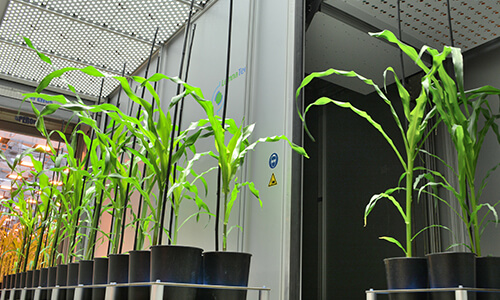A vision for the future is at the heart of CAPITALISE
This programme learns from nature to improve photosynthesis using biotechnology driven conventional and novel plant breeding techniques. We will accelerate efforts to 2030 and beyond, to deliver next generation future-proofed high-yielding crops to farmers to meet growing global food demands.
CAPITALISE will contribute to the Green Revolution 2.0 to meet future demands for food security and the growing bioeconomy. The best technologies including germplasm, protocols, and genetic and phenotyping tools, will create new routes for industry breeding programmes. These programs will seek to maintain or increase crop quality and improve Water Use Efficiency (WUE)and Nutrient Use Efficiency (NUE).
Globally, photosynthesis may be unique in providing the means to sustainably increase area yield per hectare of staple crops. This will contribute to the UN sustainable development goals (SDGs) and the global COP commitments:
Work towards achieving SDGs
Food and agriculture are at the heart of the 2030 Agenda, providing the first steps towards ending poverty and hunger (food security, SDG2), to responding to climate change (Climate action, SDG 13) and sustaining our natural resources (Life on Land, SDG 15). Zero Hunger, Affordable and Clean Energy, Responsible Consumption and Production, and Climate Action can all benefit from crops with improved photosynthesis as a result of higher crop yields, more allocation of carbon to soils, and more raw materials for the bioeconomy
The Green Revolution 2.0 can contribute to COP21
Improved photosynthesis will convert more CO2 to biomass and soil carbon which will directly off-set some of the current agricultural contribution to Greenhouse Gas emissions (24% of the global total), reducing the risks of climate change and addressing the SDGs.
Utilising natural variation will allow crops to be developed that are suited to the variable environments that are predicted from ongoing climate change. This supports the FAO climate-proof crops initiative, and EU ambitions to secure food supply, and optimise use of water and minerals. We will build on the CropBooster-P activities and provide a specialised photosynthesis orientated technology base, that can contribute to developing future plant science programmes.
Read more about

Road mapping 2030
